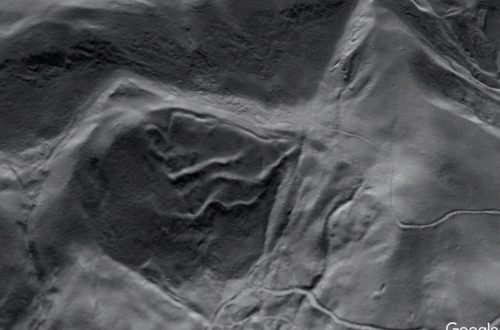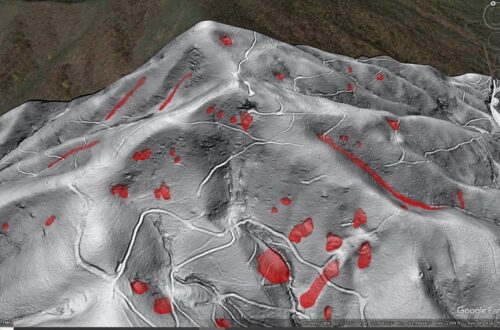Lidar-derived imagery of 1949 debris flows on North Fork Mountain, Grant County, West Virginia
by Philip S. Prince
An intense convective storm on June 17-18, 1949, produced approximately 16 inches (400 mm) of rainfall in southern Grant County, West Virginia. The intense precipitation caused numerous debris flows on North Fork Mountain, a ridge developed on moderately dipping Siluro-Devonian sandstones on the back limb of the Wills Mountain anticline.
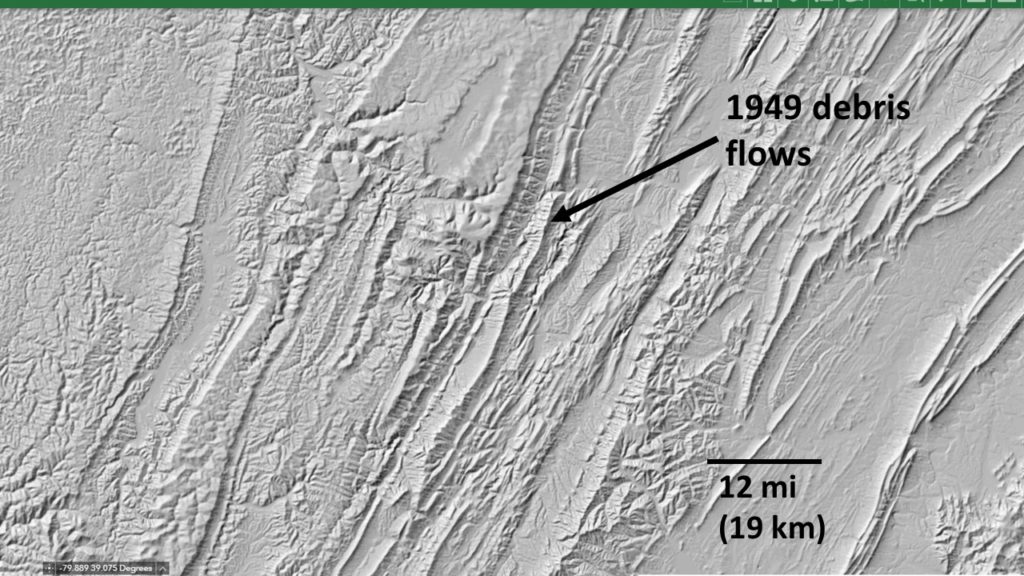
Cenderelli and Kite (1998) mapped some of the flows in detail (along with others immediately southwest resulting from a 1985 storm), and the resulting paper is a great read. Features related to the flows are very visible and distinct in lidar-derived hillshade and slope-shade imagery. I produced several .kmz overlays of the area for a 3-D view, and the outstanding West Virginia Landslide Tool offers streaming plan-view surface imagery of the area. The results of the flows are locally visible in aerial photography, particularly once their position is noted using lidar functions. All measurements in the following images represent distance over the land surface.
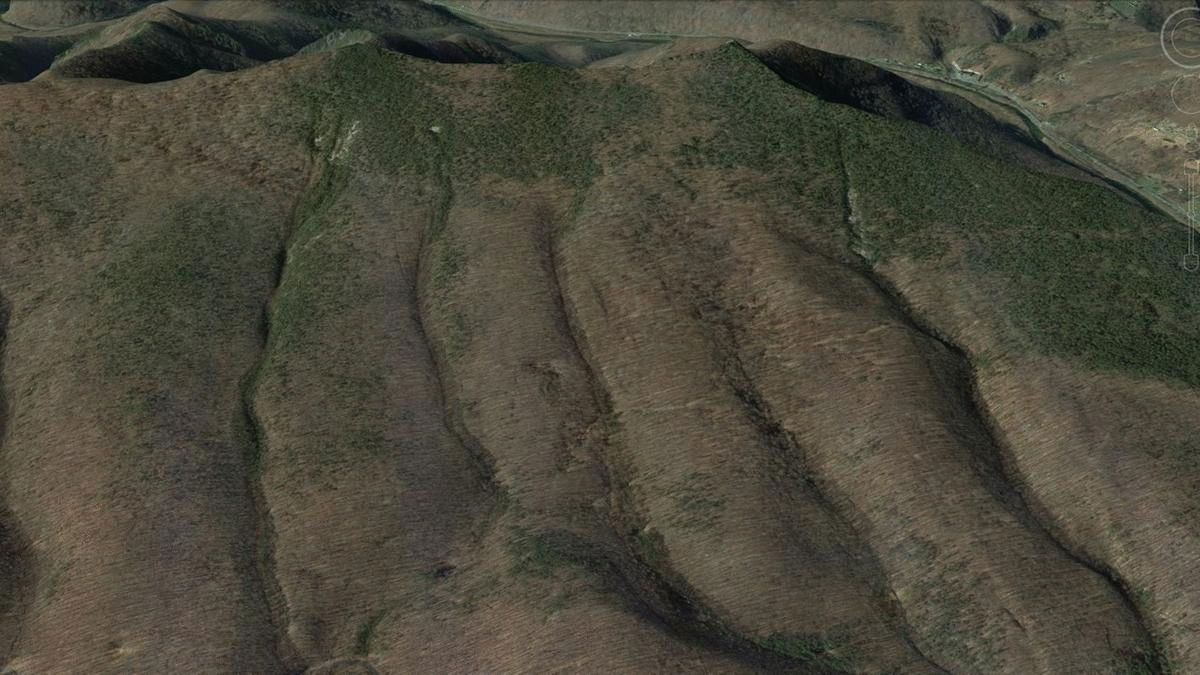
The GIF above shows the southeast slope of North Fork Mountain, which is a dip slope developed on the resistant Siluro-Devonian sandstones. Failure zones where the flows initiated are visible as white patches where the sandstone was laid bare by failure of overlying soil, colluvium, and regolith. The flows scoured the channels for a considerable distance downslope, and the effects of the scouring are also faintly visible in the aerial photography. The yellow polygon outlines an interesting translational landslide that presumably also occurred during the 1949 event. Numerous older slides are visible to its right. The GIF is centered on 38.967702N 79.249423W.
The debris flow feature at far right in the GIF above has a particularly interesting-looking failure (initiation) zone.
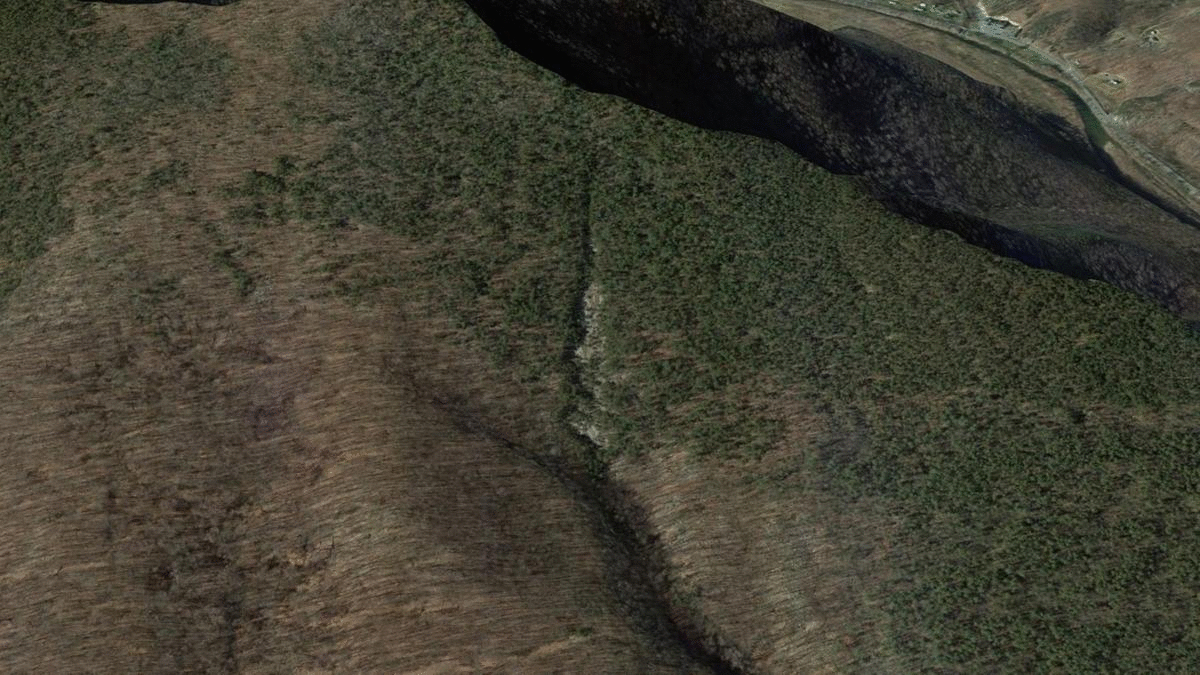
The elongated scar visible in the hillshade imagery coincides with exposed white sandstone bedrock. The scar widens downslope, which is atypical with respect to the other failure zones on the southeast side of the mountain.
The longest debris flow features in this area extend about 1.6 miles (2.5 km) from failure zone to the downslope terminus of deposited material. The Austin Run flow, which is mapped in detail in Cenderelli and Kite (1998), is highlighted below. The flow with the elongated failure zone from the previous GIF traveled down the ravine at the right side of the image.
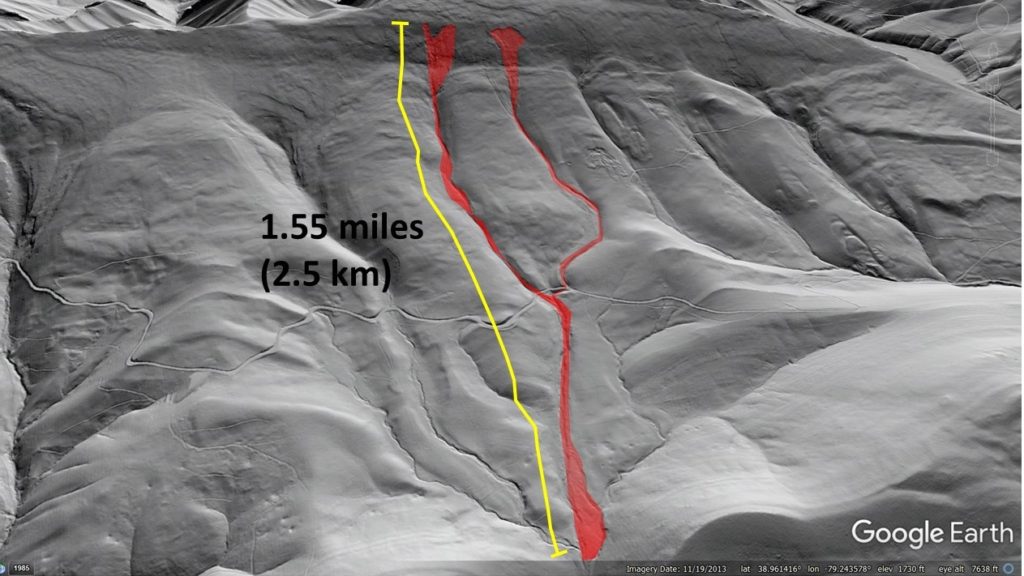
The hillshade imagery has adequate resolution to reveal small-scale features created by the flows, such as boulder levees deposited along the flow tracks. The boulder levees shown below are located just up and right of the “s” in “miles” in the image above. They provide some sense of the extent of the flow within the Austin Run stream valley.
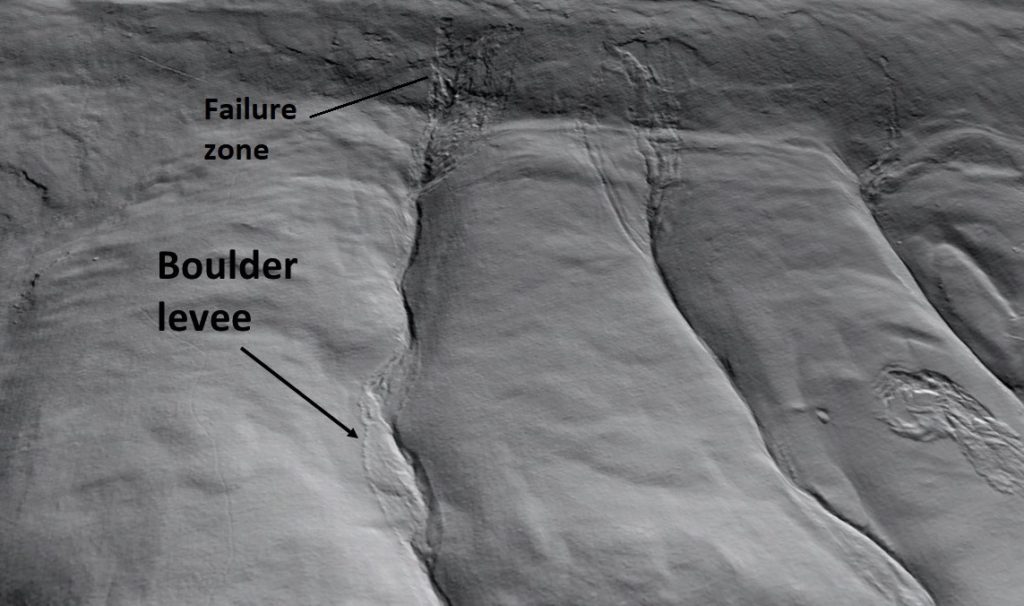
Boulder transport is also apparent in a significant flow to the southwest, which followed a less channelized path downslope. The second image below with no annotation shows how flow-related surface features stand out within the smoother surrounding land surface.
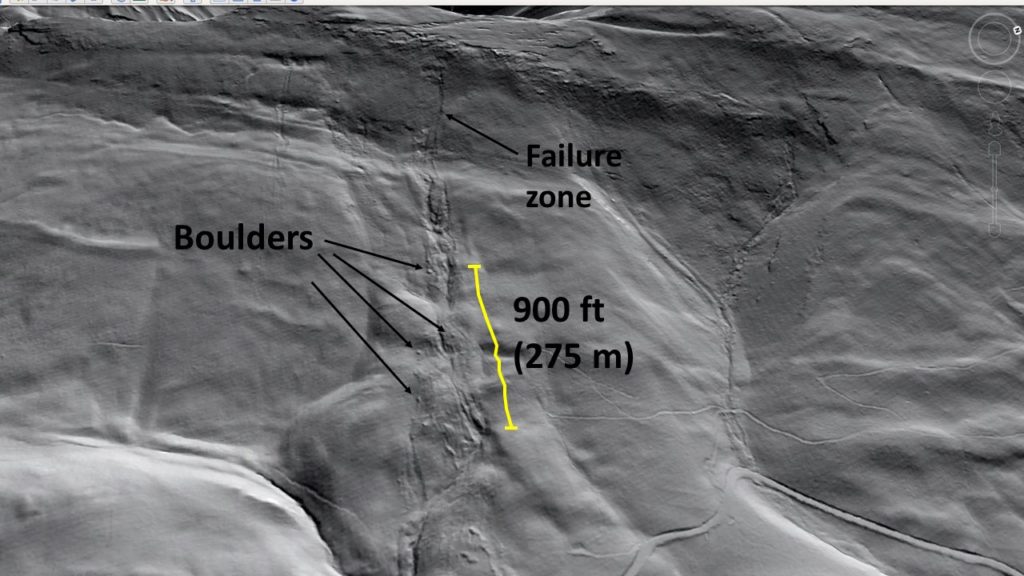
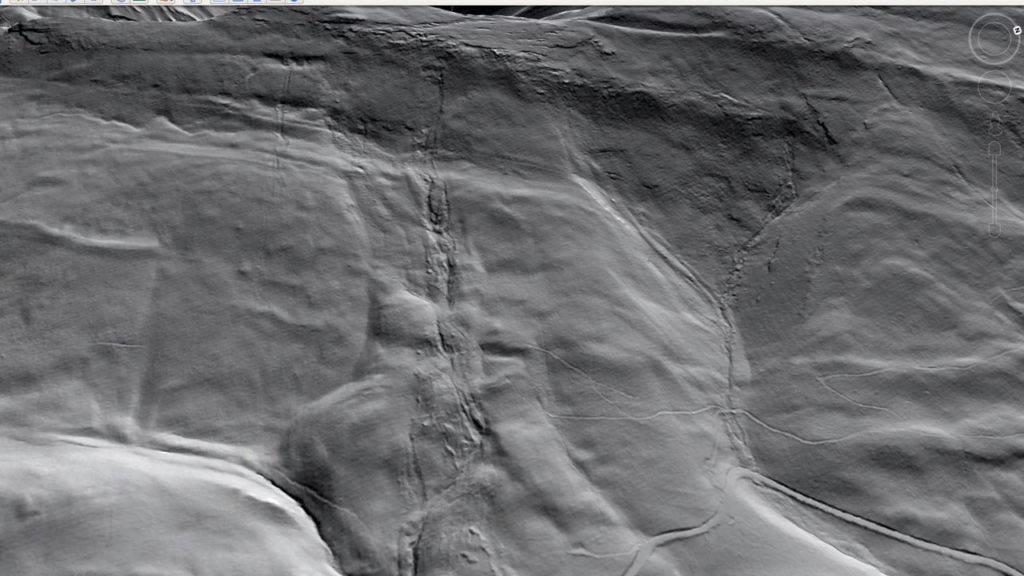
Boulder levees are also visible on a smaller flow track to the northeast. An interesting rock slide with a flow component at its downslope end is visible at lower right in the image.
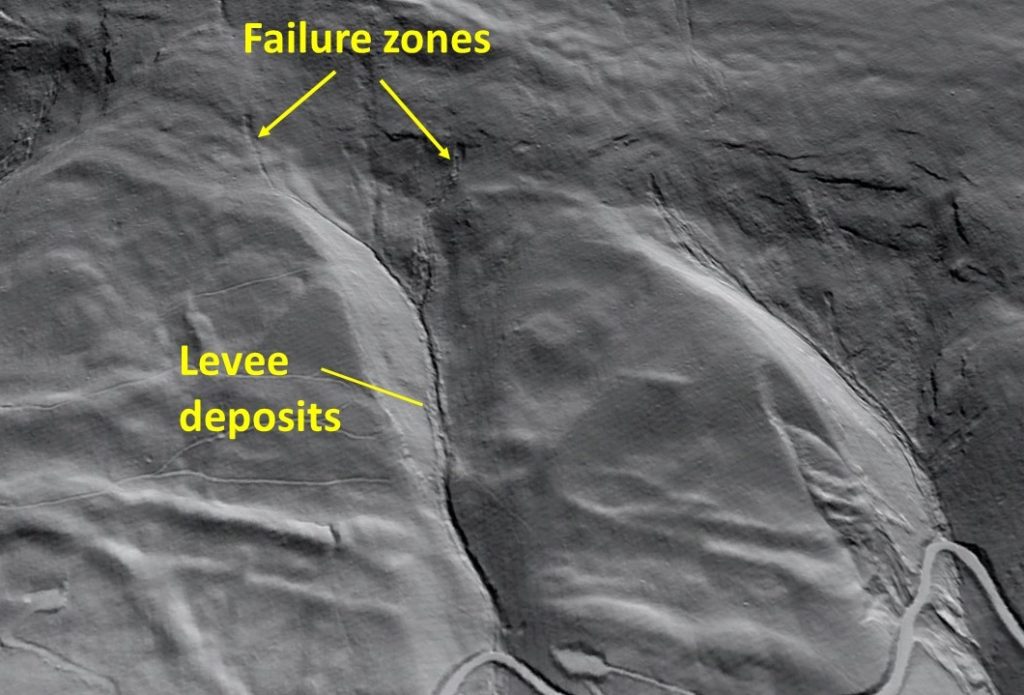
Considerable debris flow activity occurred on the northwest scarp slope of the ridge. The image below shows a well-defined failure zone just below the Silurian sandstone cliffs on the ridge crest.
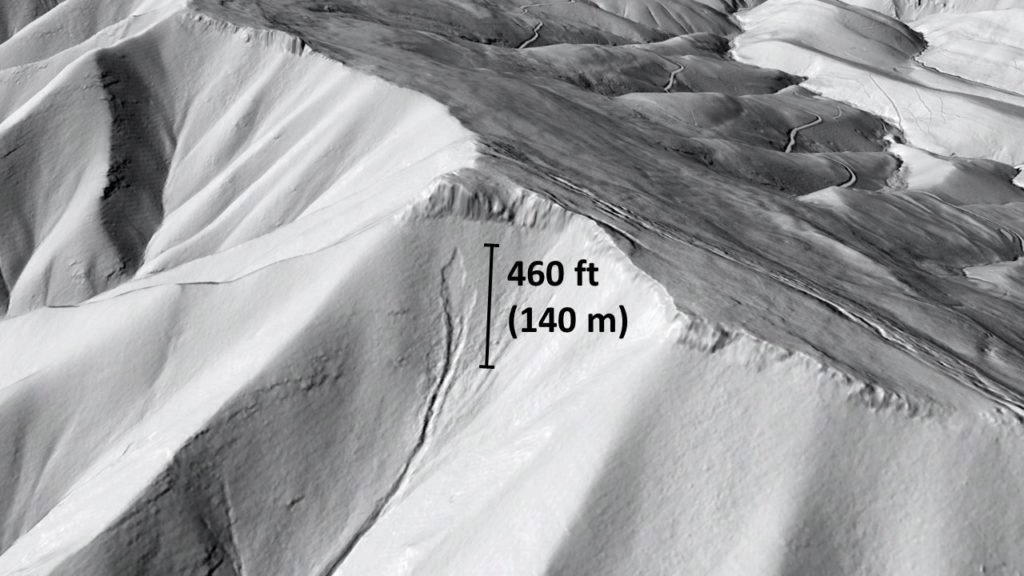
The northwest flank of the ridge is underlain by maroon sandstones of the upper Ordovician Juniata Formation just below the ridge crest. Martinsburg Formation shale is present beneath the Juniata, and the position of the contact is not immediately clear in the imagery. Much of the upper portion of the scarp slope is mantled by sandstone talus derived from the white Silurian sandstone cliffs at the ridge crest. The image below shows the same area as the previous image, with the sandstone cliffs, white talus, and failure zone scar visible.
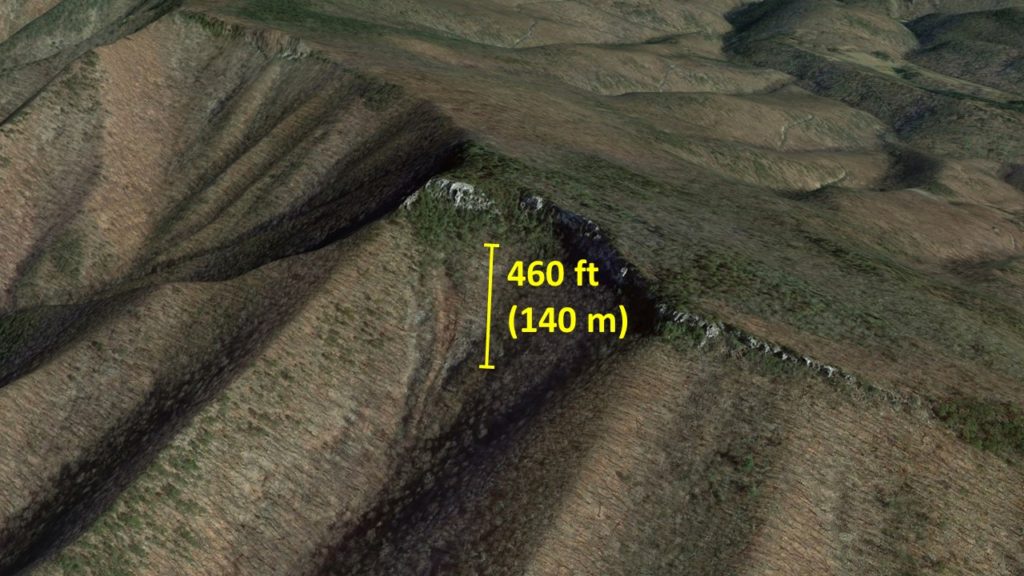
The pink color of the failure zone scar is consistent with the Juniata (or potentially uppermost Martinsburg) Formation, and it contrasts sharply with the white sandstone talus through which it cuts. This flow may have resulted from failure of the talus pile at its contact with underlying residual soil or intact bedrock.
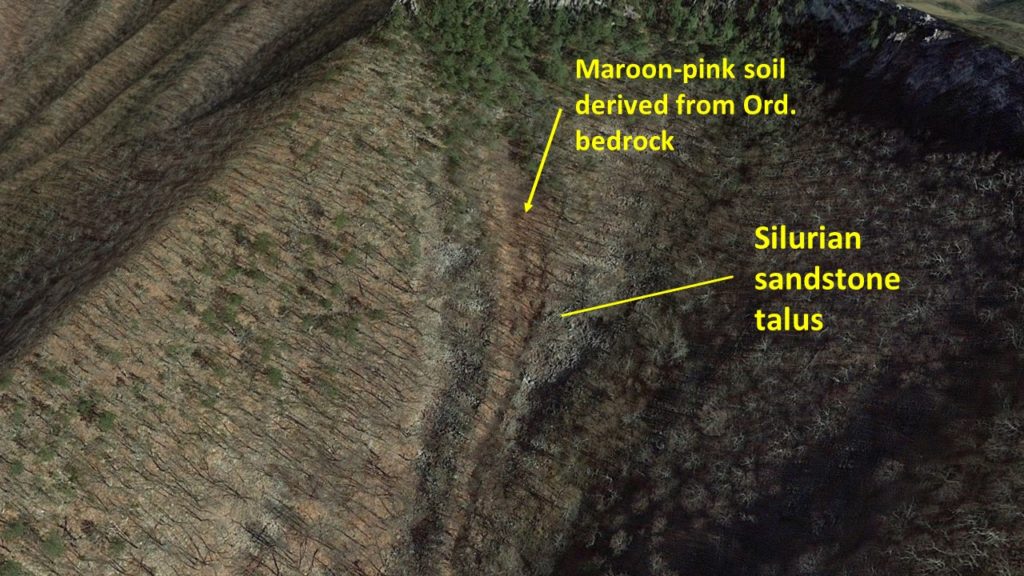
This flow, which is just north of the Kisamore Run flow described in Cenderelli and Kite (1998), appears to have traveled ~1.25 miles (2 km), essentially all the way to the North Branch of the Potomac River. The river channel and its flow direction are noted by the blue arrow in the lower left corner of the image below. The axis of the Wills Mountain Anticline is actually underneath the word “zone;” the apparent anticline just left of the center of the image is part of a complex structure that may involve passive backthrusts.
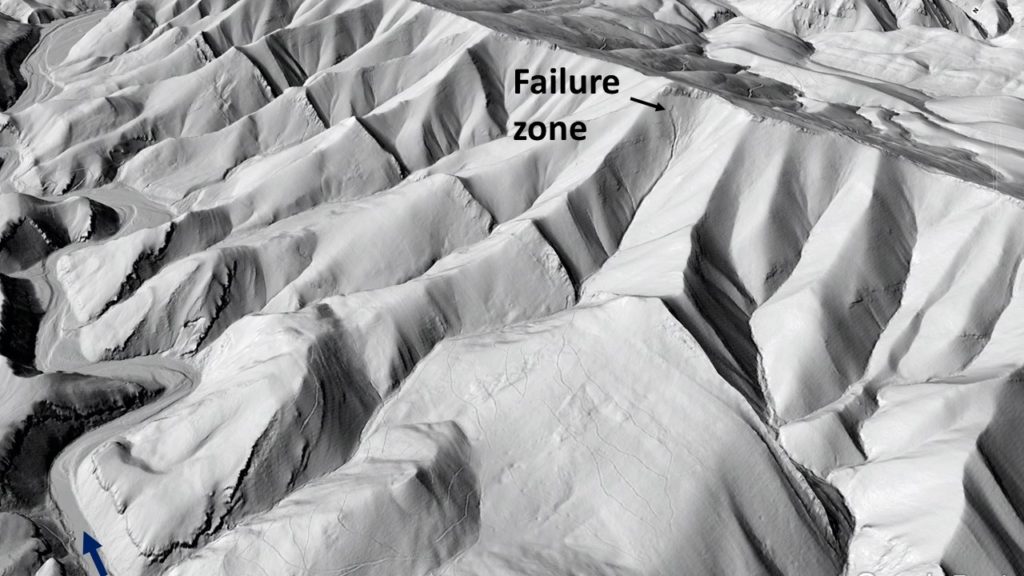
While I typically favor hillshade imagery for viewing slope failure features, slope-shade (inverted black-and-white slope raster) is necessary to appreciate the debris flow features on the northwest flank of North Fork Mountain. The GIF below shows numerous failure zones within the upper Ordovician interval. Failure zones have a different shape from those visible on the southeast, dip slope side of the mountain.
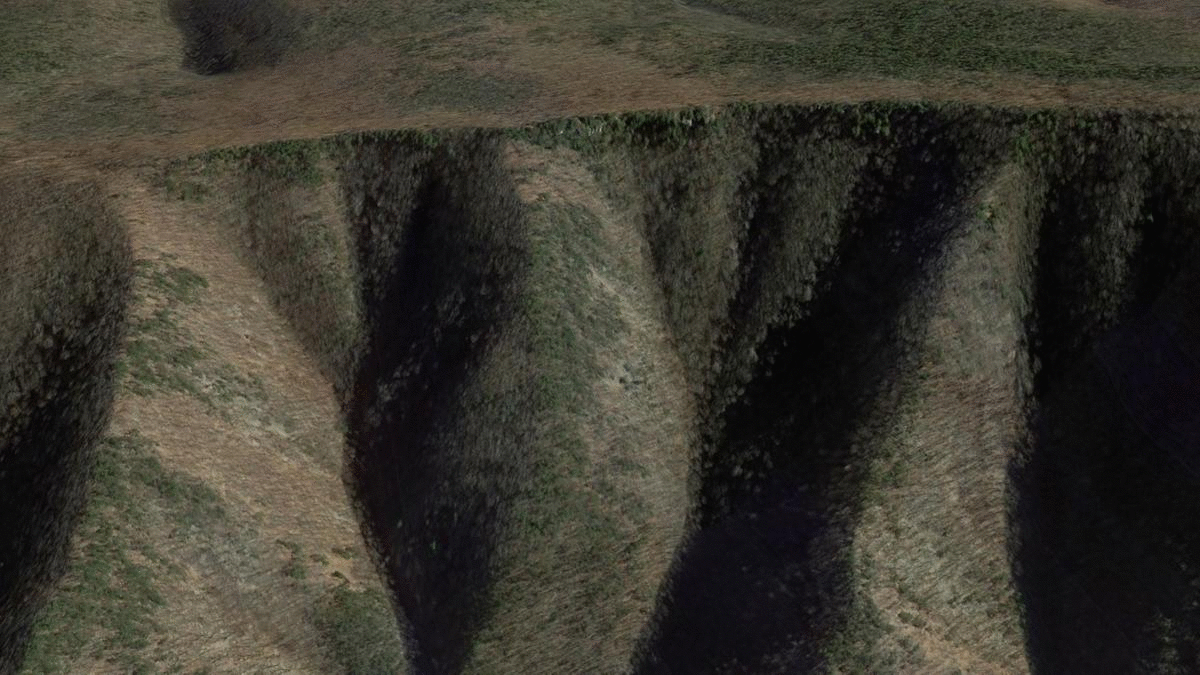
Slope-shade imagery reveals channel scouring related to the flow that left the pink failure scar.
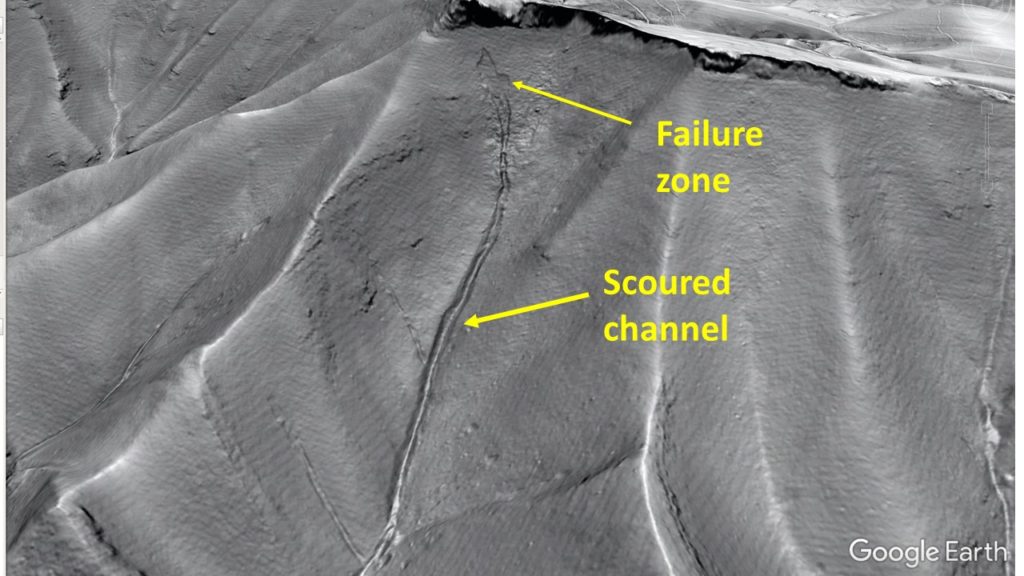
Extensive scouring is also visible at the head of the Kisamore Run flow (see Cenderelli and Kite, 1998). This view gives some sense of the the amount of material entrained into these flows.
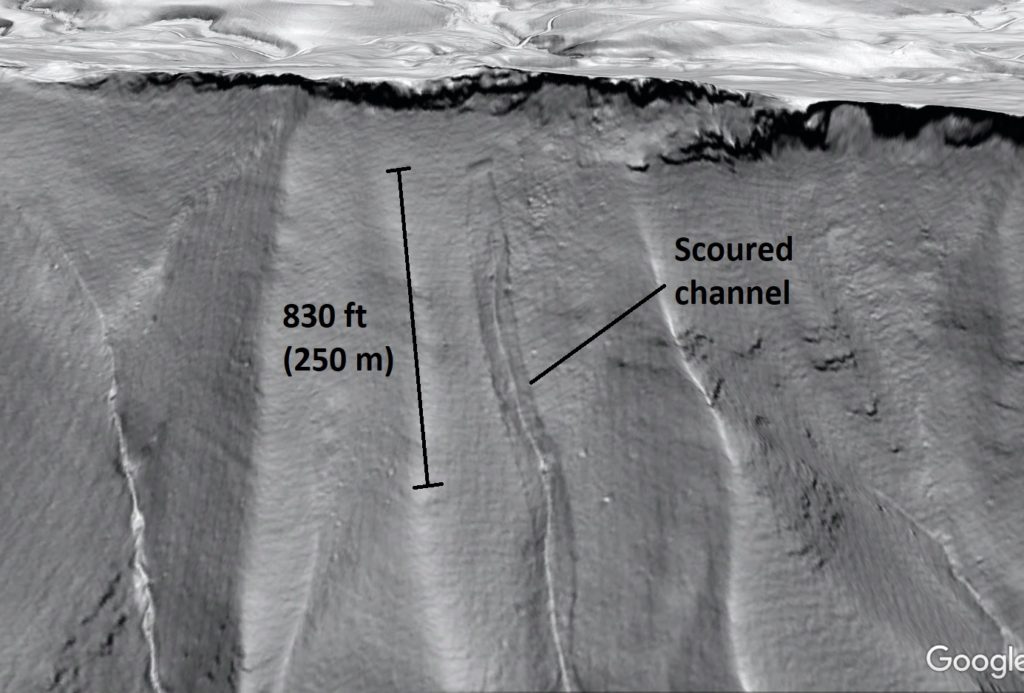
At the Potomac River gap at the north end of the mountain, slope-shade reveals a significant flow feature in an area completely shadowed in aerial photography.
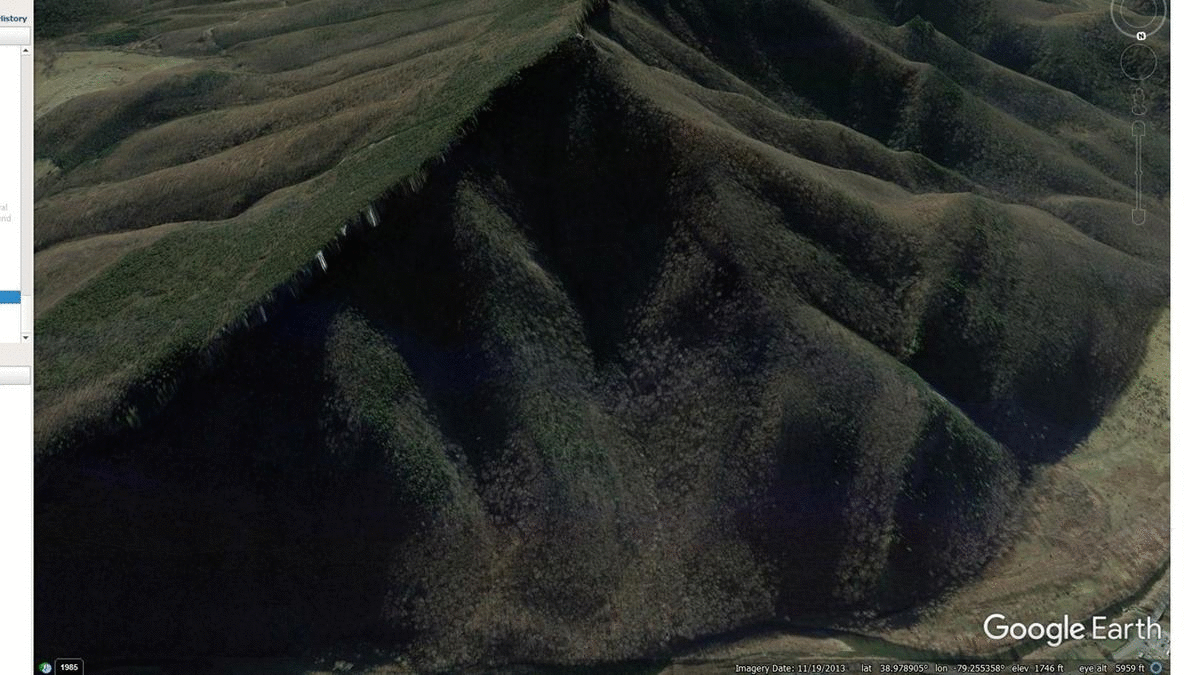
Debris flow events present a significant hazard to life and property in all parts of the Appalachians. The 1949 event that created the features shown here caused 8 fatalities and displaced a tremendous number of residents. Detailed mapping of the type conducted by Cenderelli and Kite (1998) (as well as many other authors throughout the region), along with analysis of detailed surface imagery, can greatly enhance understanding of where debris flows begin and where they travel. This understanding, in turn, can potentially reduce the human impact of these particularly dynamic and mobile slope failure events.


